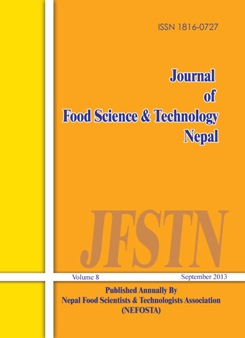Use of Higher Ethylene Generating Fruits for Ripening as an Alternative to Ethylene
DOI:
https://doi.org/10.3126/jfstn.v8i0.11757Keywords:
acetylene, carbide, ethylene, threshold levelAbstract
Every fruit has its own best eating quality upon natural ripening. But not all fruits are allowed to ripen on the plant. Ripe fruits cannot withstand the postharvest handling system when shipped long distance. They are likely to become soft and mealy with insipid flavour after traveling long. Climacteric fruits are often picked at the maturity stage so that they can withstand the postharvest handling hazards. Likewise to ripen them, ethylene gas is generally used. In most of the countries calcium carbide is used as a source of acetylene (alternative to ethylene) for ripening. However it has been banned in many countries including Nepal. And for those who produce organic fruits, natural ripening can bring a physico-chemical hazard during postharvest handling. Ripe climacteric fruits produce ethylene gas in amounts higher than the threshold level required to induce the ripening process of such fruits. So as a solution to the above problem, ripe fruits can be taken to ripen the mature climacteric fruits.
DOI: http://dx.doi.org/10.3126/jfstn.v8i0.11757
J. Food Sci. Technol. Nepal, Vol. 8 (84-86), 2013
Downloads
1183
3602
Downloads
Published
How to Cite
Issue
Section
License
The author will be the copyright holder of this open access journal - 'Journal of Food Science and Technology Nepal (JFSTN)'.




